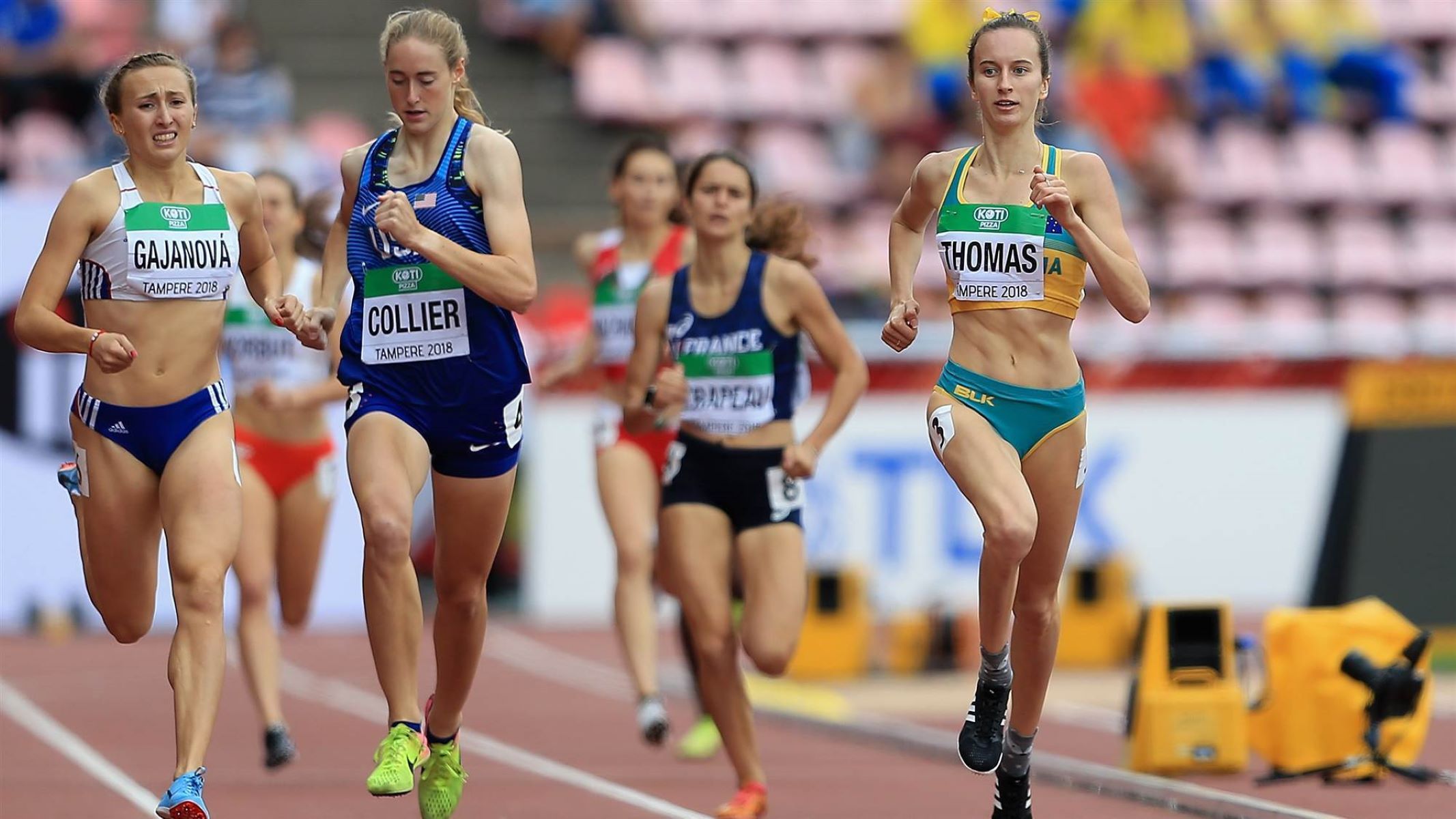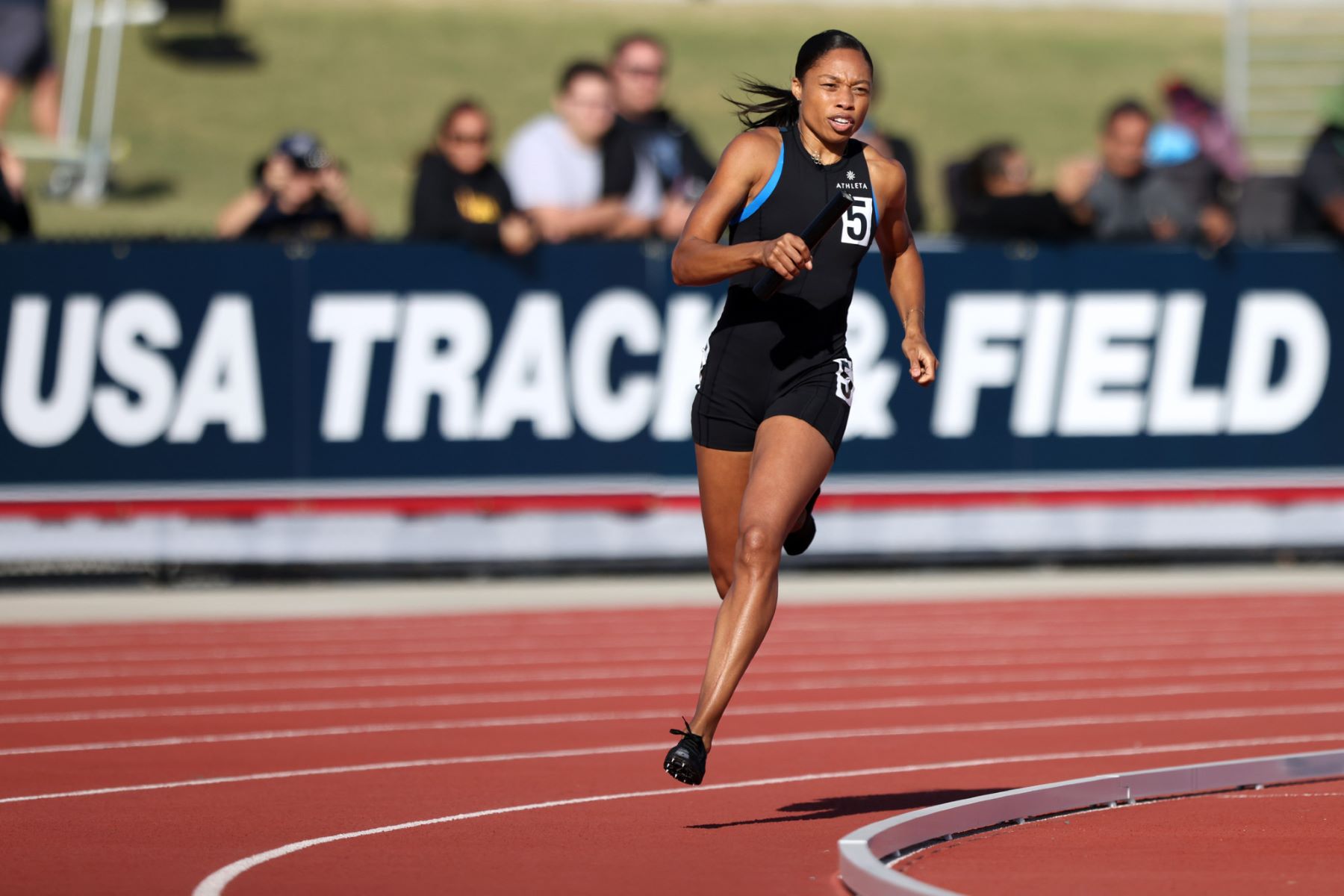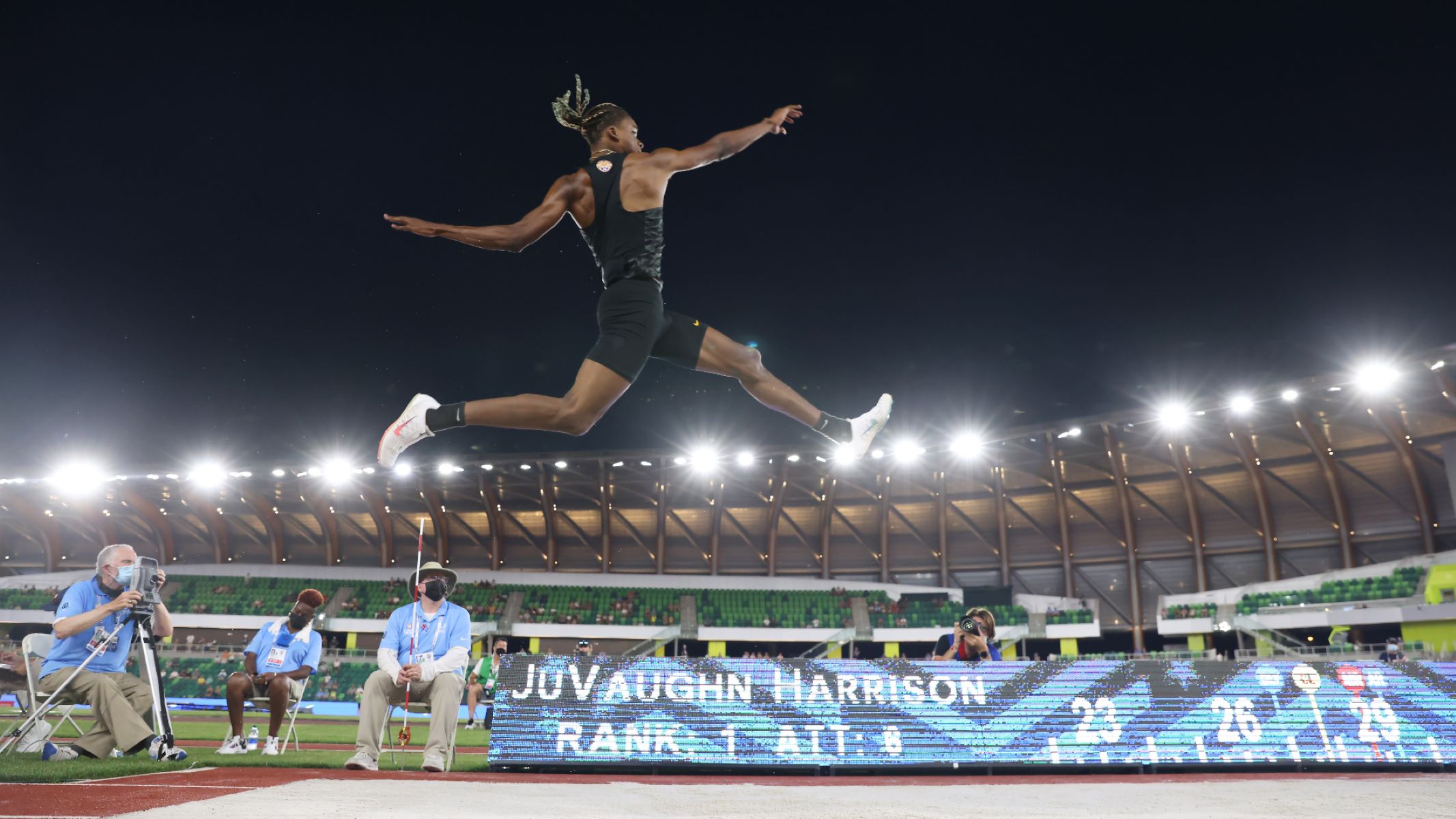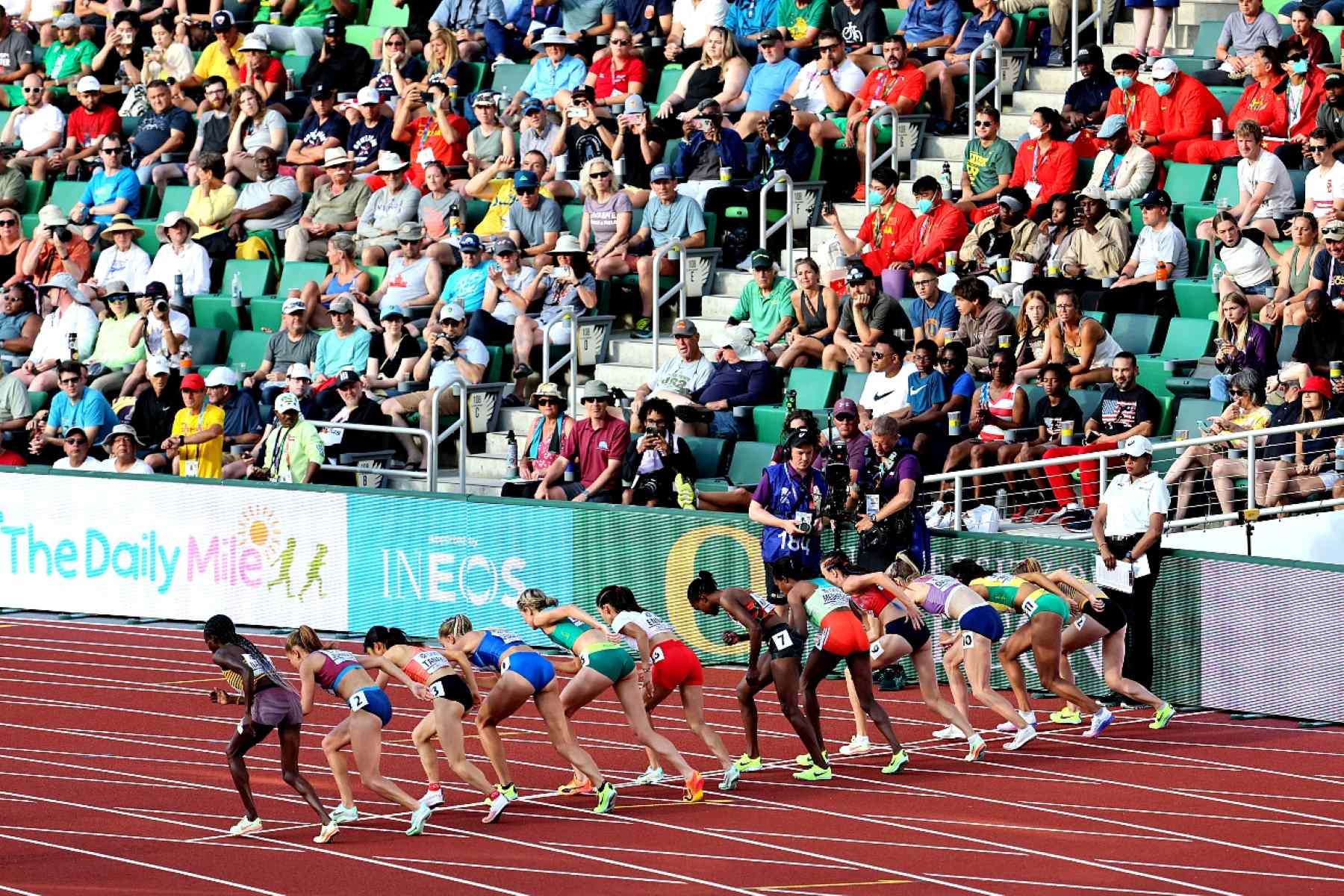Home>Misc>Featured>How Many Track And Field Events Are There In A Decathlon?
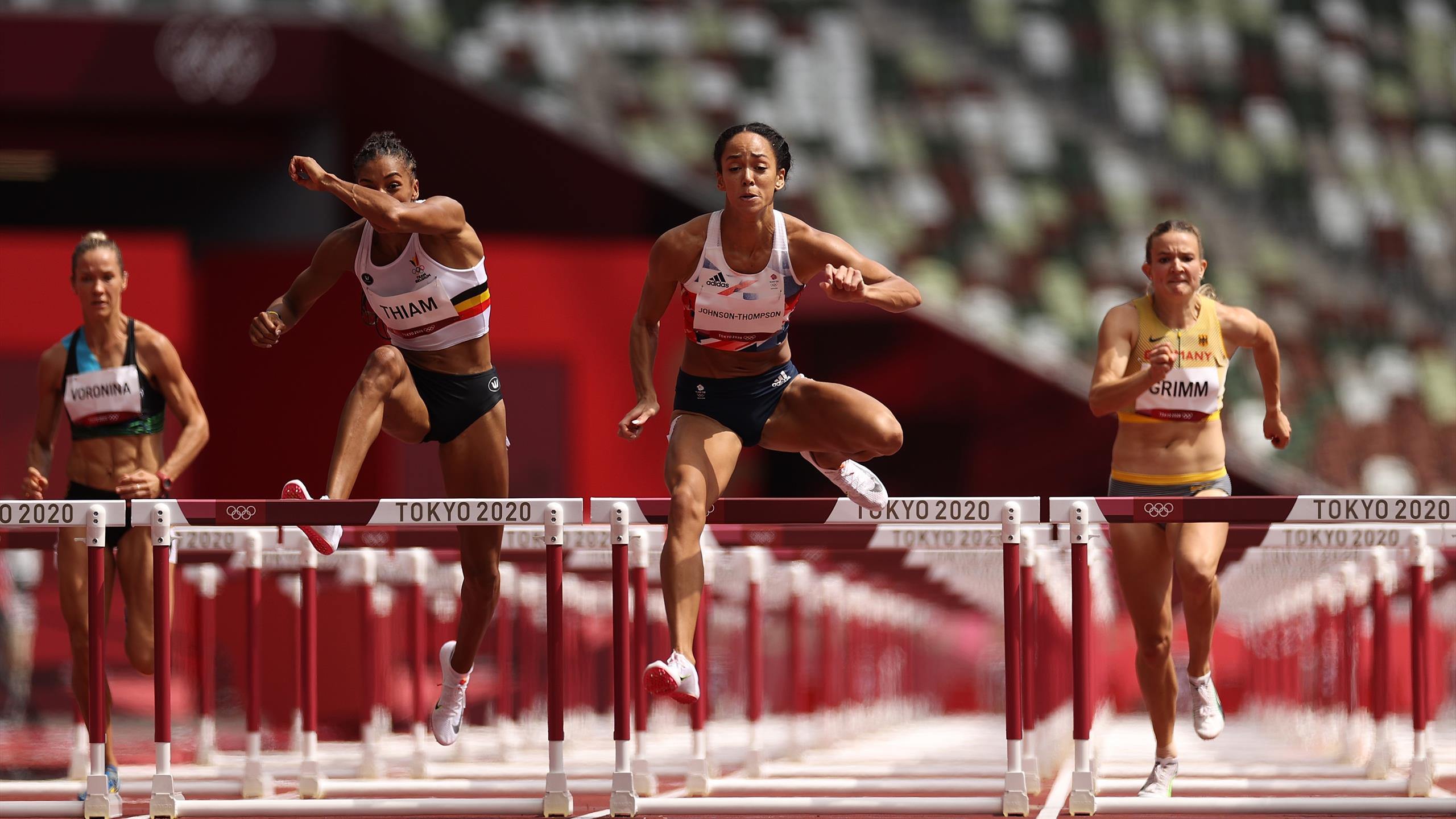

Featured
How Many Track And Field Events Are There In A Decathlon?
Modified: January 2, 2024
Discover the numerous track and field events included in a decathlon, featured in this informative guide. Find out how many events athletes compete in and the varied skills they showcase.
Introduction
The decathlon is a grueling athletic competition that tests the versatility and endurance of athletes. It consists of ten track and field events, making it one of the most challenging and prestigious multi-disciplinary events in the world of sports. This article will delve into the various track and field events that are part of the decathlon, providing an in-depth understanding of each event’s unique characteristics and requirements.
The decathlon originated in ancient Greece and was revived during the early 20th century as a modern Olympic event. The competition showcases the physical prowess and mental fortitude of athletes as they compete over two consecutive days. The goal of the decathlon is to accumulate the highest number of points by successfully completing each event.
Participating in a decathlon requires athletes to possess a wide range of skills, including sprinting, jumping, throwing, and endurance running. These events not only challenge an athlete’s physical abilities but also test their mental focus and strategic approach.
Moreover, the decathlon showcases the true all-around athlete, as it encompasses both speed and power events, as well as technical events. Athletes must excel in different disciplines to achieve success in the decathlon, making it a true test of versatility.
Throughout the history of the decathlon, many legendary athletes have emerged, leaving a lasting legacy in the world of athletics. These athletes have redefined the boundaries of human potential and pushed the limits of what is physically possible.
In the following sections, we will explore the ten track and field events that make up the decathlon. Each event has its challenges and intricacies, requiring specific skills and techniques. By understanding each event, we can gain insight into the physical demands and mental preparation necessary to excel in the decathlon.
Overview of the Decathlon
The decathlon is a combined track and field event that consists of ten different disciplines, with athletes earning points for their performance in each event. The event is held over two consecutive days, with the aim of determining the overall best athlete across all disciplines.
Traditionally, the decathlon events are divided into five track events and five field events. The track events include the 100-meter dash, 400-meter dash, 1500-meter run, 110-meter hurdles, and 400-meter hurdles. The field events consist of the long jump, high jump, shot put, discus throw, pole vault, and javelin throw.
Each event holds its unique challenges and demands specific skills and techniques. Athletes must possess a well-rounded set of abilities, combining speed, power, agility, and endurance to excel in the decathlon. Moreover, mental focus, strategy, and adaptability play crucial roles in achieving success in this multi-disciplinary event.
The decathlon utilizes a scoring system called the “point system,” where performances in each event are converted into points based on predetermined standards. The better an athlete’s performance, the more points they will score. At the end of the decathlon, the athlete with the highest overall score is declared the winner.
The decathlon is known for its grueling nature, as athletes must compete in multiple events over two consecutive days. Stamina and recovery play a significant role, as athletes must balance their energy expenditure to maintain peak performance throughout the competition.
This multi-disciplinary event has a rich history and has produced legendary athletes such as Daley Thompson, Dan O’Brien, and Ashton Eaton, who have become synonymous with the decathlon. These athletes have demonstrated exceptional skills, determination, and versatility, setting world records and inspiring future generations of decathletes.
In the following sections, we will explore each of the ten track and field events in more detail, gaining a deeper understanding of the physical demands, strategies, and techniques required to excel in the decathlon.
Track and Field Events in the Decathlon
The decathlon comprises ten different track and field events, five of which are track events and five of which are field events. These events test the skills and abilities of athletes across various disciplines, providing a comprehensive assessment of their all-around athleticism.
The five track events in the decathlon include the 100-meter dash, 400-meter dash, 1500-meter run, 110-meter hurdles, and 400-meter hurdles. These events require athletes to showcase their speed, endurance, and technical proficiency.
Starting with the 100-meter dash, athletes sprint at maximum speed to cover the distance in the shortest possible time. The 400-meter dash is a one-lap race that demands both speed and endurance, with athletes pacing themselves strategically to maintain a strong finish.
Endurance takes center stage in the 1500-meter run, where athletes must maintain a steady pace over four laps. This event requires mental fortitude and tactical decision-making, as athletes strategize when to make their move and sprint towards the finish line.
Hurdle races are another component of the decathlon, with both the 110-meter hurdles and 400-meter hurdles challenging athletes’ technique, agility, and speed. Athletes must gracefully navigate over a series of barriers, clearing them without knocking them down and adjusting their stride accordingly.
The five field events in the decathlon focus on jumping, throwing, and vaulting skills. These events include the long jump, high jump, shot put, discus throw, pole vault, and javelin throw.
In the long jump, athletes sprint down the runway and launch themselves as far as possible into a sandpit, combining speed, power, and technique. The high jump tests an athlete’s ability to clear a horizontal bar using various jumping techniques, such as the Fosbury Flop or the Western Roll.
Throwing events in the decathlon include the shot put, discus throw, and javelin throw. Shot put requires athletes to generate explosive power and hurl a heavy spherical object as far as possible. The discus throw involves spinning and releasing a discus while maintaining balance and accuracy. Lastly, the javelin throw showcases an athlete’s ability to launch a spear-like object for maximum distance.
The final field event in the decathlon is the pole vault, where athletes use a long flexible pole to clear a bar set at increasing heights. This event combines speed, strength, coordination, and technique.
Each track and field event in the decathlon presents its own unique challenges, requiring athletes to excel in various physical attributes and technical skills. The decathlon serves as the ultimate test of an athlete’s versatility, determination, and adaptability across multiple disciplines. In the following sections, we will explore each event in detail, providing insights into the strategies, techniques, and physical demands necessary to excel in each discipline.
100-Meter Dash
The 100-meter dash is one of the most iconic and thrilling events in track and field, testing an athlete’s raw speed and explosive power. It is the ultimate showcase of pure sprinting ability and serves as a critical component of the decathlon.
In the 100-meter dash, athletes line up side by side and sprint in a straight line over a distance of 100 meters. The goal is to cross the finish line in the shortest possible time and claim victory in the race.
Speed is of utmost importance in the 100-meter dash, and athletes must generate maximum power and acceleration right from the start. A strong and explosive start, known as the “block start,” plays a crucial role in gaining an early advantage and building momentum.
Technique is also essential in the 100-meter dash. Athletes must maintain proper form, with arms driving efficiently, knees lifting high, and powerful strides propelling them forward. The ability to maintain speed and acceleration over the entire distance is paramount to success in this event.
The 100-meter dash requires a blend of physical attributes, including strength, power, quick reflexes, and fast twitch muscle fibers. Athletes must possess explosive leg strength, powerful hip extension, and lightning-quick reaction times.
Moreover, mental fortitude plays a vital role in the 100-meter dash. Athletes must block out distractions, maintain focus, and execute their race plan with precision. The ability to stay mentally composed in the high-pressure environment of a sprint race can make the difference between victory and defeat.
In the decathlon, the 100-meter dash is often the first event, setting the tone for the entire competition. A strong performance in this event not only earns valuable points but also establishes an athlete’s presence and confidence amongst competitors.
Decathletes who excel in the 100-meter dash showcase exceptional sprinting abilities, often clocking times well below 11 seconds. They are masters of acceleration, displaying explosive speed out of the blocks and maintaining high velocity throughout the race.
Overall, the 100-meter dash in the decathlon serves as a thrilling display of raw speed and power. It requires a potent combination of physical athleticism, technical proficiency, and mental resilience. Athletes who excel in this event often set the stage for a successful decathlon performance.
Long Jump
The long jump is a captivating event that showcases an athlete’s ability to generate power, speed, and technique to achieve maximum distance in a single leap. This field event is a staple of the decathlon, testing the athlete’s explosive power and agility.
In the long jump, athletes sprint down a runway, building up momentum, before taking off from a designated takeoff board. The objective is to land as far as possible beyond the takeoff point, with the distance measured from the nearest mark in the sandpit.
Technique plays a crucial role in the long jump, as athletes must execute a smooth transition from the approach run to the takeoff and achieve optimal height and distance in their jump. The “hang” and “sail” techniques are commonly used, with athletes extending their bodies in mid-air to maximize their distance.
Powerful leg drive and explosive takeoff are vital components of a successful long jump. Athletes must generate maximum force through their legs and propel themselves off the takeoff board, with the goal of achieving optimal flight phase before landing in the sandpit.
Aside from speed and power, the long jump also demands agility and coordination. Athletes must have excellent body control and control their movements in the air to maintain proper positioning and balance.
Measurements in the long jump are critical, with athletes aiming to surpass their personal bests and outperform their competitors. Each successful jump accumulates points based on the distance achieved, enhancing an athlete’s overall score in the decathlon.
The long jump event in the decathlon often involves fierce competition, with athletes striving to achieve remarkable distances. Decathletes who excel in the long jump have a combination of speed, power, technique, and precision.
Furthermore, the long jump can also provide valuable momentum and psychological advantage in the decathlon. A strong performance in this event can boost an athlete’s confidence, setting a positive tone for subsequent events.
The long jump exemplifies the dynamic nature of the decathlon, requiring athletes to excel in a variety of physical attributes such as speed, power, coordination, and technique. Decathletes who achieve remarkable distances in the long jump demonstrate their versatility and athleticism.
Shot Put
The shot put is a captivating field event that tests an athlete’s strength, explosive power, and technique in throwing a heavy spherical object known as the shot. This event is a fundamental component of the decathlon, assessing an athlete’s ability to generate maximum distance through the implementation of proper throwing mechanics.
In the shot put, athletes must execute a series of coordinated movements to generate maximum force and propel the shot as far as possible. The event requires a combination of raw power, speed, and precision.
The shot put technique begins with a balanced and stable stance, also known as the “glide” or “spin” technique. Athletes must maintain a solid base, with one foot firmly planted in the throwing circle and the other foot driving forward.
Explosive leg drive is crucial in the shot put, as athletes must push off forcefully from the ground with their legs while maintaining stability and balance. This powerful leg drive transfers energy into the upper body, maximizing the momentum created.
The shot put also requires effective use of the upper body, particularly the arms and shoulders. Athletes must engage their muscles and generate rotational force, propelling the shot forward with a swift and controlled release.
The size and weight of the shot vary depending on the category and gender of the competition. Male athletes typically use a 7.26-kilogram shot, while female athletes use a 4-kilogram shot. The shot must be launched from the neck, and the distance is measured from the closest mark to where the shot lands.
Athletes aim to achieve maximum distance in the shot put, as each successful throw counts towards accumulating points in the decathlon. Technique, strength, and precision all play crucial roles in achieving exceptional results in this event.
The shot put event in the decathlon often involves intense competition, as athletes seek to outperform their rivals and set personal bests. Decathletes who excel in the shot put demonstrate tremendous power, explosiveness, and technical precision.
Beyond its physical demands, the shot put event also requires mental focus and concentration. Athletes must block out distractions, maintain a steady mindset, and execute their techniques meticulously to achieve optimal results.
The shot put exemplifies the diversity of skills and abilities required in the decathlon. Athletes who thrive in this event showcase their strength, explosive power, and technical prowess, solidifying their position amongst the top decathletes in the world.
High Jump
The high jump is a thrilling and graceful event that tests an athlete’s ability to clear a horizontal bar at ever-increasing heights. This field event in the decathlon showcases an athlete’s agility, technical proficiency, and ability to generate explosive power.
In the high jump, athletes sprint toward a curved approach and execute a takeoff using a technique such as the Fosbury Flop or the Western Roll. The goal is to clear the bar without knocking it off its supports, ultimately achieving the highest possible height.
Technique is paramount in the high jump, as athletes must execute a smooth transition from the approach run to the takeoff. The Fosbury Flop technique, most commonly used today, involves a backward-facing approach and a curved arching body motion that enables athletes to clear greater heights.
Powerful leg drive and a well-timed takeoff are essential in the high jump. Athletes must generate maximum force through their legs and propel themselves upward, arcing their bodies over the bar in a fluid and controlled manner.
Flexibility and body control play a crucial role in the high jump. Athletes must contort their bodies in mid-air to clear the bar while maintaining proper positioning and balance. The ability to twist, turn, and tuck in the air is vital for achieving success in this event.
Clearing the bar at higher heights requires mental fortitude and confidence. Athletes must approach each attempt with focus, visualizing a successful jump, and pushing their limits to surpass previous heights. Mental resilience is key when faced with the pressure of higher bars and a competitive field of athletes.
In the decathlon, the high jump often serves as a pivotal event that can significantly impact an athlete’s overall score. Strong performances in the high jump can provide valuable points and solidify an athlete’s position amongst their competitors.
Decathletes who excel in the high jump demonstrate exceptional athletic ability and technical proficiency. They combine speed, power, coordination, and precision to clear impressive heights, captivating audiences with their grace and agility.
The high jump exemplifies the multidimensional skill set required in the decathlon, highlighting an athlete’s versatility and ability to adapt to different events. Decathletes who thrive in the high jump showcase their athleticism and solidify their status as all-around competitors.
400-Meter Dash
The 400-meter dash is a demanding track event that tests an athlete’s speed, endurance, and tactical decision-making. It is a grueling test of both physical and mental fortitude, serving as a key component of the decathlon.
In the 400-meter dash, athletes sprint one full lap around the track, which measures 400 meters in distance. The objective is to complete the race in the shortest possible time, crossing the finish line ahead of competitors.
Endurance and pacing are crucial in the 400-meter dash. Athletes must balance their energy expenditure over the entire race, finding the right blend of speed and stamina to maintain a strong and competitive pace.
The 400-meter dash requires a combination of explosive speed, power, and mental resilience. Athletes must generate maximum force during the start and drive powerfully through their legs to maximize velocity on the track.
Proper running form is essential in the 400-meter dash. Athletes must maintain a balanced stride, pumping their arms in sync with their legs to maximize efficiency and forward propulsion.
Mental toughness is vital in the 400-meter dash. Athletes must push through physical fatigue, embrace the discomfort, and maintain focus even as their bodies scream for rest. Tactical decision-making, such as strategic positioning and well-timed surges, can make a significant difference in this race.
The 400-meter dash poses a unique challenge in the decathlon, as it demands a blend of sprinting speed and endurance capabilities. Executing the race with precision and maintaining composure amidst the physical and mental demands is crucial for success.
Decathletes who excel in the 400-meter dash demonstrate exceptional speed and the ability to endure high-intensity efforts. They possess the explosiveness of a sprinter combined with the endurance of a middle-distance runner, showcasing their all-around athletic prowess.
Overall, the 400-meter dash in the decathlon is a thrilling and demanding event that tests an athlete’s speed, endurance, and mental fortitude. Successful competitors possess a combination of physical attributes, technical proficiency, and strategic acumen, making this event an exciting spectacle in the decathlon.
110-Meter Hurdles
The 110-meter hurdles is a thrilling and technically demanding track event that tests an athlete’s speed, agility, and hurdle-clearing technique. This high-intensity race is a vital component of the decathlon, showcasing the versatility and athleticism of decathletes.
In the 110-meter hurdles, athletes sprint over ten 1.067-meter high hurdles spaced evenly along the track. The goal is to cross the finish line in the shortest possible time while successfully clearing each hurdle without knocking it down.
Speed is paramount in the 110-meter hurdles, as athletes must sprint aggressively between the hurdles to maintain a competitive pace. Rapid acceleration and powerful leg drive are essential during the start, enabling athletes to build momentum and tackle the hurdles effectively.
Technique plays a crucial role in the 110-meter hurdles. Athletes must approach each hurdle with proper body positioning, placing their lead leg over the hurdle while maintaining balance and rhythm. The trail leg must swiftly follow, clearing the hurdle without disrupting the athlete’s stride.
Hurdle-clearing requires a combination of timing, flexibility, and coordination. Athletes must possess the ability to adjust their strides and react quickly to the ever-changing distance and height of each hurdle. Flawless execution of hurdle technique is paramount to maintain speed and avoid penalties.
Mental focus is vital in the 110-meter hurdles. Athletes must maintain concentration and composure throughout the race, making split-second decisions on stride length, hurdle approach, and takeoff. The ability to stay mentally strong amidst the chaos of a high-speed hurdling race is crucial for success.
The 110-meter hurdles in the decathlon adds an additional layer of complexity to the event. Athletes must manage and allocate energy wisely, considering the challenges posed by competing in multiple disciplines within a short time frame.
Decathletes who excel in the 110-meter hurdles combine raw speed, explosive power, precise technique, and mental sharpness. They display immense athleticism and coordination, showcasing their adaptability and versatility in the realm of track and field.
Overall, the 110-meter hurdles in the decathlon is a captivating event that challenges an athlete’s speed, agility, technique, and mental resilience. Success in this event not only contributes to an athlete’s overall score but also reflects their ability to navigate and excel in the complexities of multi-disciplinary competition.
Discus Throw
The discus throw is a captivating field event that tests an athlete’s strength, technique, and precision in propelling a heavy discus as far as possible. This event is a fundamental component of the decathlon, highlighting an athlete’s ability to generate power and transfer it effectively into the throw.
In the discus throw, athletes aim to launch a discus, a round piece of equipment made of metal, as far as possible within a marked throwing sector. The distance is measured from the center of the throwing circle to the landing point of the discus.
Technique plays a crucial role in the discus throw. Athletes must execute a smooth and continuous motion, generating maximum rotational force through their body to build momentum. This momentum is then transferred into the throw, propelling the discus forward with speed and distance.
Powerful leg drive, along with upper-body strength and coordination, are necessary components of a successful discus throw. Athletes must generate explosive force through their legs and hips while maintaining control and balance throughout the throwing motion.
The discus requires proper grip and release technique. Athletes must hold the discus firmly, creating the right amount of friction between the discus and their fingers. The release must be timed precisely to achieve maximum distance, with the aim of achieving a smooth and controlled release.
Furthermore, mental focus is essential in the discus throw. Athletes must visualize their ideal throw, block out distractions, and maintain a calm and confident mindset. The ability to concentrate under pressure and execute technique with precision can significantly impact the distance achieved.
The discus throw in the decathlon adds an exciting challenge for athletes, as they must excel across a range of events, including running, jumping, and throwing disciplines. Decathletes who excel in the discus throw demonstrate exceptional strength, technique, and mental composure.
Successful discus throwers are characterized by their ability to generate tremendous power and transfer it efficiently into the throw. They combine strength and technique to launch the discus with precision and achieve remarkable distances.
Overall, the discus throw in the decathlon is a captivating field event that tests an athlete’s strength, technique, and mental fortitude. Success in this event showcases an athlete’s versatility and ability to excel in various disciplines within the realm of track and field.
Pole Vault
The pole vault is a thrilling and technically demanding field event that tests an athlete’s agility, strength, technique, and ability to clear a bar set at ever-increasing heights. It is one of the most fascinating events in the decathlon, showcasing an athlete’s ability to generate power and use a pole as a tool for achieving maximum height.
In the pole vault, athletes sprint with a pole in hand and use it to launch themselves off the ground, aiming to clear a horizontal bar set at various heights. The athlete’s goal is to clear the bar without knocking it off its supports, ultimately achieving the highest possible height.
Technique plays a vitally important role in the pole vault. Athletes must execute a series of precise movements, including the plant, takeoff, swing, and extension, to generate maximum energy and transfer it into upward momentum for an efficient and successful clearance of the bar.
Powerful leg drive and proper placement of the pole during the plant phase are key components of a successful pole vault. Athletes must utilize their speed and timing to plant the pole firmly into the vault box, allowing it to flex and store energy for the subsequent takeoff phase.
During the takeoff, athletes aim to generate upward thrust by extending their bodies and utilizing the pole’s recoil. Skills such as pole carry and pole drop are crucial in utilizing the stored energy effectively and generating maximum height.
Proper body control and coordination are essential in the pole vault. Athletes must exhibit flexibility, core strength, and body awareness to navigate the bar successfully while clearing it with confidence.
Mental fortitude is vital in the pole vault. Athletes must overcome fear, visualize their successful clearance, and execute their technique flawlessly. The ability to handle pressure and stay composed in high-stakes competitions is crucial for ultimate success in this event.
In the decathlon, the pole vault often serves as a pivotal event that can significantly impact an athlete’s overall score. Strong performances in the pole vault not only earn valuable points but also demonstrate an athlete’s versatility and adaptability in different disciplines.
Decathletes who excel in the pole vault showcase exceptional skills, combining speed, strength, technical proficiency, and mental focus. They embody the spirit of the decathlon, displaying versatility and showcasing their athleticism as they soar to impressive heights.
Overall, the pole vault in the decathlon is a captivating event that challenges an athlete’s agility, strength, technique, and mental resilience. Success in this event not only contributes to an athlete’s overall score but also represents their ability to excel in the complexities of multi-disciplinary competition.
Javelin Throw
The javelin throw is a mesmerizing field event that tests an athlete’s strength, technique, and precision in propelling a spear-like object known as the javelin as far as possible. It is a thrilling and vital component of the decathlon, showcasing an athlete’s ability to generate power and launch the javelin with accuracy.
In the javelin throw, athletes aim to release the javelin from behind a designated throwing arc and launch it as far as possible. The distance is measured from the point of impact with the ground to the nearest mark in the landing sector.
Technique plays a critical role in the javelin throw. Athletes must execute a series of coordinated movements, including the approach run, plant, and release, to generate maximum force and transfer it into the throw.
A powerful and controlled run-up is essential in the javelin throw. Athletes must build momentum, utilizing their speed and stride length to generate additional force for the throw. Maintaining balance, rhythm, and timing is crucial as athletes prepare to throw the javelin.
During the plant phase, athletes must firmly plant their foot and rotate their body to generate rotational force. This energy is then transferred into the throw, allowing them to propel the javelin forward with maximum power.
Releasing the javelin with precision is a critical component of a successful throw. Athletes must time their release to achieve the optimal angle and trajectory, maximizing the distance covered by the javelin.
Mental focus is vital in the javelin throw. Athletes must control their nerves, block out distractions, and remain calm and composed during the approach and release. The ability to concentrate under pressure and execute technique with precision can significantly impact the distance achieved.
The javelin throw in the decathlon adds an exciting element of throwing proficiency to the event. Decathletes must harness their strength, technique, and mental acuity to excel in both throwing and other disciplines within the decathlon.
Decathletes who excel in the javelin throw demonstrate exceptional strength, technique, and focus. They combine raw power, coordination, and precision to launch the javelin with tremendous force and achieve impressive distances.
Overall, the javelin throw in the decathlon is a captivating event that tests an athlete’s strength, technique, and mental fortitude. Success in this event symbolizes an athlete’s exemplary throwing abilities and adds to the excitement and spectacle of the decathlon.
1500-Meter Run
The 1500-meter run is a challenging and tactical track event that tests an athlete’s endurance, speed, and strategic decision-making. It is the final event in the decathlon, encompassing one of the longer distances and serving as a true test of an athlete’s physical and mental capabilities.
In the 1500-meter run, athletes must complete three and three-fourth laps around the track, totaling 1500 meters. The objective is to cross the finish line in the shortest possible time, showcasing both speed and stamina in this middle-distance race.
Endurance is a crucial factor in the 1500-meter run. Athletes must maintain a strong and consistent pace over the course of all the laps, carefully managing their energy to avoid early fatigue and ensuring a strong finish.
Strategic decision-making plays a significant role in the 1500-meter run. Athletes must gauge the competition and decide when to accelerate or make a move to overtake their rivals. Proper pacing and well-timed surges at the right moments can make all the difference in this race.
The 1500-meter run requires a combination of speed, endurance, and mental fortitude. Athletes must possess the ability to generate both anaerobic and aerobic energy, adapting their bodies to the unique demands of this challenging event.
Proper running form and efficiency are essential in the 1500-meter run. Athletes must maintain a balanced stride, utilizing their arms and legs optimally to maximize efficiency and minimize wasted energy.
Mental resilience is vital in the 1500-meter run. Athletes must remain focused, stay mentally strong through physical fatigue, and push through the discomfort that arises during prolonged effort. Mental fortitude and the ability to embrace the pain can be key factors in achieving success in this event.
The 1500-meter run is often a high-stakes event in the decathlon, with athletes aiming to earn valuable points in the final stages of the competition. A strong performance in this event can substantially impact the final standings, exemplifying an athlete’s ability to push through physical and mental barriers.
Decathletes who excel in the 1500-meter run showcase remarkable endurance, tactical acumen, and the ability to maintain a strong and consistent pace. They possess the mental and physical strength necessary to thrive in this demanding event.
Overall, the 1500-meter run in the decathlon is a captivating event that challenges an athlete’s endurance, speed, and strategic decision-making. Success in this event represents an athlete’s ability to harness their physical and mental capabilities and demonstrates their all-around athleticism and resilience in the world of track and field.
Conclusion
The decathlon is a remarkable test of an athlete’s versatility, endurance, and skill across ten track and field events. Through the 100-meter dash, long jump, shot put, high jump, 400-meter dash, 110-meter hurdles, discus throw, pole vault, javelin throw, and 1500-meter run, decathletes showcase their all-around athletic abilities and strive for excellence in each discipline.
These events not only require physical strength, speed, and endurance but also demand mental resilience, strategic decision-making, and technical precision. Decathletes must seamlessly transition between sprints, jumps, throws, and middle-distance running, showcasing their adaptability and versatility throughout the competition.
Each track and field event in the decathlon presents its own unique challenges and rewards. From the explosive power of the 100-meter dash to the precision and coordination required in the pole vault, decathletes must master a wide range of skills to excel in each discipline.
The decathlon is a true test of an athlete’s character and determination. It requires unwavering commitment, hours of training, and the ability to push through physical and mental barriers. It celebrates the all-around athlete, someone who possesses a multitude of talents and disciplines.
Throughout the history of the decathlon, legendary athletes have emerged, leaving a lasting legacy in the world of athletics. Their achievements have inspired future generations to push the boundaries of human performance and constantly strive for greatness.
In the end, the decathlon represents the pinnacle of multi-discipline competition, providing a platform for athletes to showcase their physical abilities, mental fortitude, and technical proficiency. It is a true test of an athlete’s versatility and a captivating spectacle for fans of track and field.
So, as we marvel at the tremendous feats accomplished in the decathlon, let us appreciate the dedication, skill, and determination it takes to succeed in this ultimate test of all-around athleticism.
